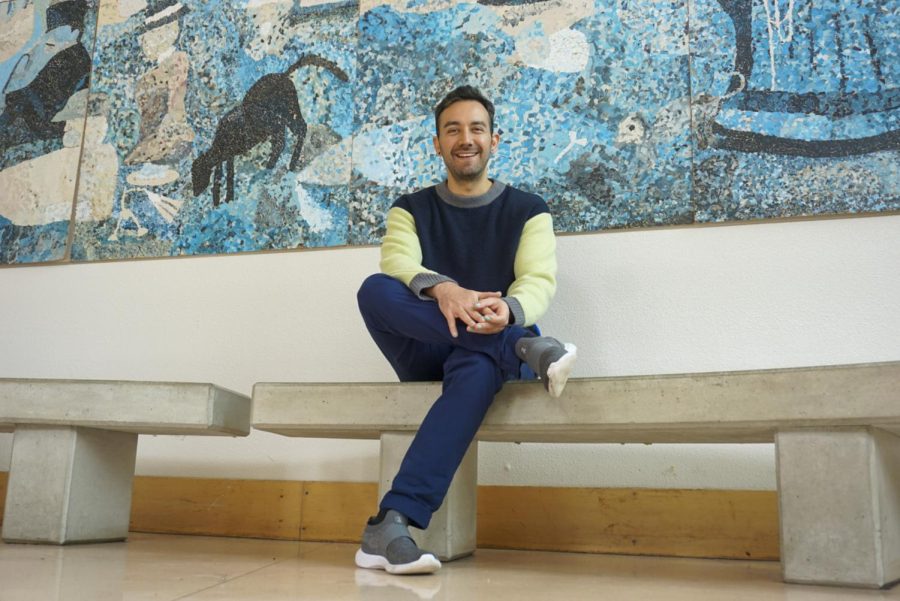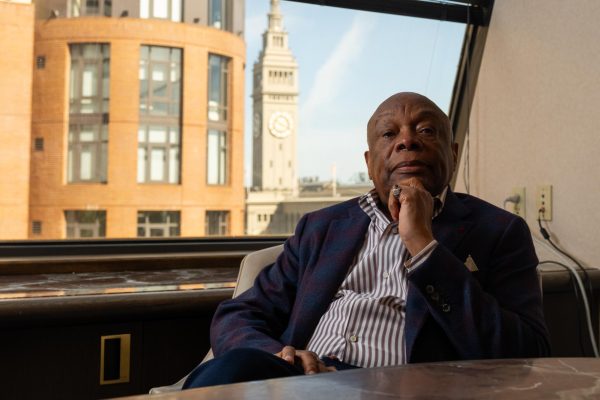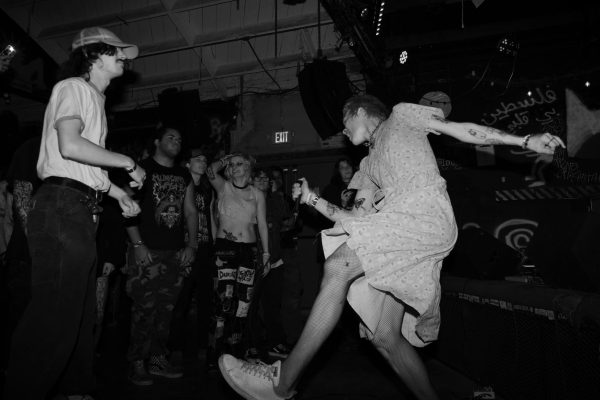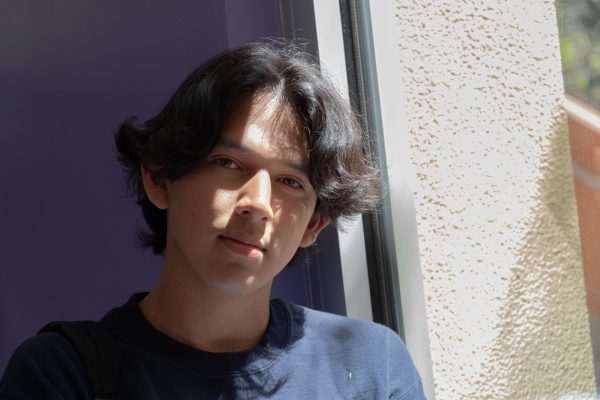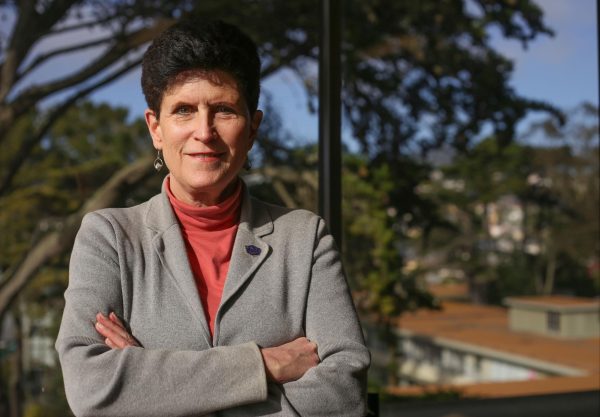Do Animals Dream?
Yes, many do — some even experience nightmares. SF State professor and author David M. Peña Guzmán discusses his latest book on the subject and answers questions on what goes on inside animal minds.
SF State Professor David Guzmán poses for a portrait in Burk Hall at SF State. (Tatyana Ekmekjian / Xpress Magazine)
Dogs running in their sleep, cuttlefish changing colors as they dream and elephants with PTSD awoken by nightmares. While no one can speak with absolute certainty as to the perspective of animals, documented animal behavior throughout history has led many to try. It’s no question that sleep is required for all living creatures, but where do dreams come into play?

Many animals do, in fact, experience what we refer to as dreams. That said, the dreams of animals take on different forms than those of their human counterparts. Fish, for example, sleep by shutting down certain areas of their brain or by reducing their metabolic functions (sometimes both). Rats sleep and have consistently been observed to have the ability to dream about their surroundings – leading them to recall important details while awake. The evidence of these animal dreams raises ethical and philosophical questions that have yet to be answered.
David M. Peña Guzmán Ph. D, an associate professor of humanities and liberal studies at SF State, published When Animals Dream: the Hidden World of Animal Consciousness in 2022. In the book, he uses available scientific literature to examine trends and observations within the animal science realm. He incorporates philosophical perspectives that push readers to consider the ethics of the way we perceive and interact with animals in all areas of our world.
“My thesis is that it is impossible for an organism to dream and to lack consciousness,” writes Guzmán in the second chapter of his book. “Since we have it on good authority that many animals dream, it follows that those animals must be conscious agents with their own perspectives on the world – even if that perspective, like Heidi’s or like Wittgenstein’s lion’s [animals who serve as examples in the book], is arrantly unlike ours.”
In other words, Guzmán argues that what animals experience while asleep is as much a part of their reality as dreams are a part of ours. He believes that the prevalence of dream states in animals proves their consciousness, though the type of consciousness they experience is still up for debate – a topic explored throughout the book.
Guzmán calls on published research to back up his argument. With no shortage of counter arguments and real world examples, readers are left well-equipped to form their own conclusions on the dream world — and consciousness — of animals.
In your opinion, where does the culpability of humans fall with the fact that animals are able to experience nightmares?
There are two ways of thinking about culpability. One is our culpability and kind of remaining actively ignorant about just the complexity of the animal mind, to the point that we are surprised when we encounter claims like ‘animals experience sadness,’ or ‘animals experience grief,’ when we talk about the whole gamut of negative emotions that animals can undergo. So that’s one we are collectively guilty of: being surprised by things that happen often when you contextualize them, and maybe we should have already known because we already have the evidence for it.
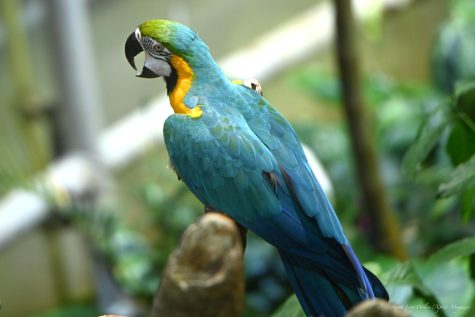
The second role that culpability faces here is when nightmares are anthropogenic, meaning that they are caused by human action. So this is definitely what happens in the case of the elephants, young elephants, again, whose mothers get killed by humans. This is also what happens in the case of weevils. [Researchers] have found similar cases with chimpanzees.
Recently, after the publication of the book, I published a short essay in Time magazine called “The Nightmares of Animals,” where I give a couple other illustrations of nightmares, including chimpanzees, who — again when they experience really dramatic scenes of violence in early childhood — that just gets imprinted. And then they replay it at night, and they can’t sleep. But that’s not to say that all animal nightmares are human in origin. I mean, animals that live in the wild obviously might have fears that are not connected to humans, right?… And so the mere fact that animals have nightmares is not in itself a problem. That just shows the range of emotional expression that we find in other animals. But yeah, when you get to animals that suffer nightmares, and who have had violent contact with humans, we can attribute responsibility to humans, either collectively or to the particular ones that played a role in the abuse of that animal.
Can you tell me a little bit more about the particular rights you were talking about when it comes to certain types of animals?
So we know that all animals sleep. And so there seems to be a trans-species constant in the animal kingdom. And based on what we know now, it’s fair to say that the vast majority of animals also have divisions within sleep. So sleep is not just the same kind of subjective state for those creatures. There are sometimes phases and transitions physiologically and neurally that happen with those animals.
All of those animals would have moral status by virtue of being dreamers, because what dreams teach us about those animals is precisely what you said earlier, that they feel that they experience that they sense and that’s the sort of thing that we ought to protect ethically and legally.
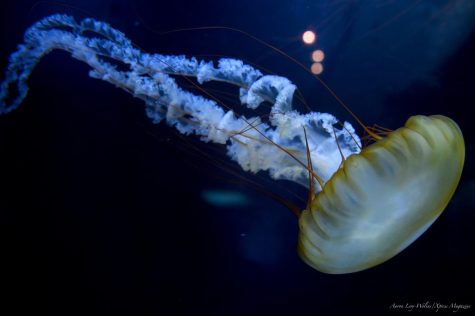
If you were to suddenly turn into an animal, what do you think your safest bet would be?
Well, my safest bet would probably be human… Yeah, I think my safest bet would be a kind of bug or insect that doesn’t rob that much human interest. I think humans are probably one of the largest sources of danger for other animals. So, maybe an animal in the ocean. Again, in a place that is less accessible to humans than the coastal regions. I would say either an insect or a fish with the caveat that as long as I’m far away from human activity.
When it comes to that political de- liberation [to protect a wider range of animals], what do you imagine? First off, do you imagine that conversation happening anytime soon? And what would that look like?
That conversation is happening in some places already. So there are pieces of legislation moving through, like the slow arteries of government. There’s already a recognition that different animals deserve different protections. And there, the debate hinges on who decides which animals get some protections and not others. So the differentiation is already there.
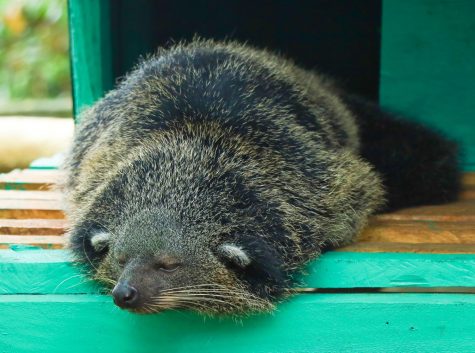
…For me that deliberation needs to change in terms of who has a voice in them and who is recognized as an expert. And that means including not only people who have expertise in animal care, like veterinarians and experts in animal physiology, but also including people who have expertise in animal sociality, animal intelligence and animal cognition. That might include neuroscientists who specialize in animals, psychologists, field people who work in ethology — that’s the name of the discipline. But it also requires experts in animal law and animal ethics. And those are almost never really given a platform in these discussions.
This interview has been edited and condensed for brevity.

Eian Gil (he/him) is a journalism & political science student at SF state, currently serving as Xpress magazine’s editor-in-chief. Originally from...

Tatyana Ekmekjian (she/her) is graduating this spring with a major in photojournalism and a minor in hospitality and tourism management at SF State. Tatyana...

Gina Castro (she/her) is a staff photographer for Golden Gate Xpress. She is a Mexican-American photojournalism major and Africana studies minor. She...


